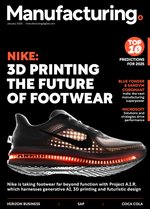3D metals printing: how will it look in five years?

Jack Beuth, director of the NextManufacturing Center at Carnegie Mellon University and Professor of Mechanical Engineering, predicts that there will be five key advances in metals additive manufacturing over the next five years – and researchers from the NextManufacturing Center are currently working on projects to help these advances take place.
- Process Design: Users will be able to design the additive manufacturing process as they design the geometry of a part; therefore, the additive manufacturing process variables can be optimized based on the part geometry and specifications.
- Monitoring and Control: Users will be able to monitor and control the additive manufacturing process. Current processes are not significantly monitored or controlled by sensors.
- Material Microstructure: Users will be able to vary the material microstructures and properties in different locations of a part by manipulating additive manufacturing process variables as a part is being built.
- Powders: Users will be able to use a wide variety of metal powders. Currently, users must use specific powders with very narrow ranges of particle sizes, which makes them expensive to produce.
- Porosity: Users will be able to eliminate or design for internal porosity, which will have a significant effect on fatigue resistance and build rate.
“NextManufacturing research at Carnegie Mellon will help enable these advances, which will significantly increase build rate and reduce cost, improve properties such as fatigue resistance, allow for customization of the entire process, and, ultimately, increase the widespread adoption of metals additive manufacturing,” says Beuth. “At the Center, we are developing an entirely new approach to metals additive manufacturing – merging data from all parts of the process to create a fully integrated understanding of the technology. This approach will optimize part geometries, material properties, cost and design.”
Follow @ManufacturingGL
- The University Manufacturing Circuit Boards from LeavesSustainability & ESG
- Schneider Electric's Commitment to Sustainable ManufacturingSustainability & ESG
- Lenovo & Saudi Alat Building Green Manufacturing FacilitySustainability & ESG
- Manufacturing & Mobility LIVE: Neby Ejigu, FINN PartnersTechnology

